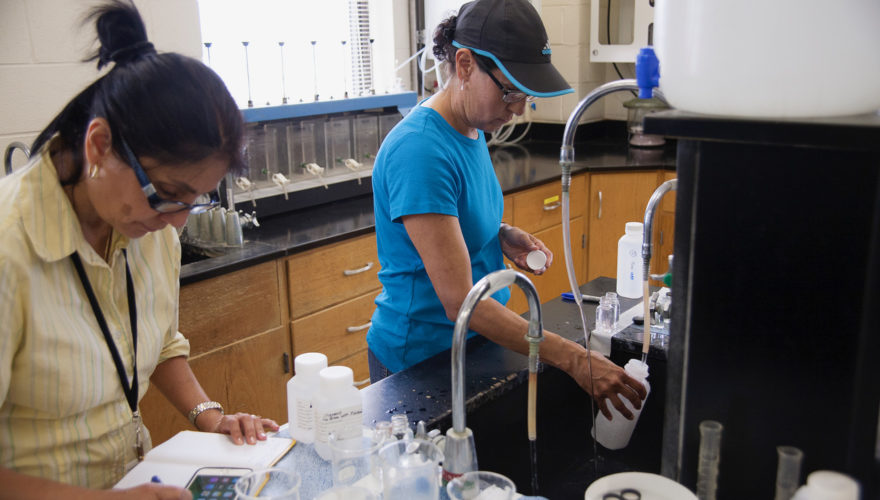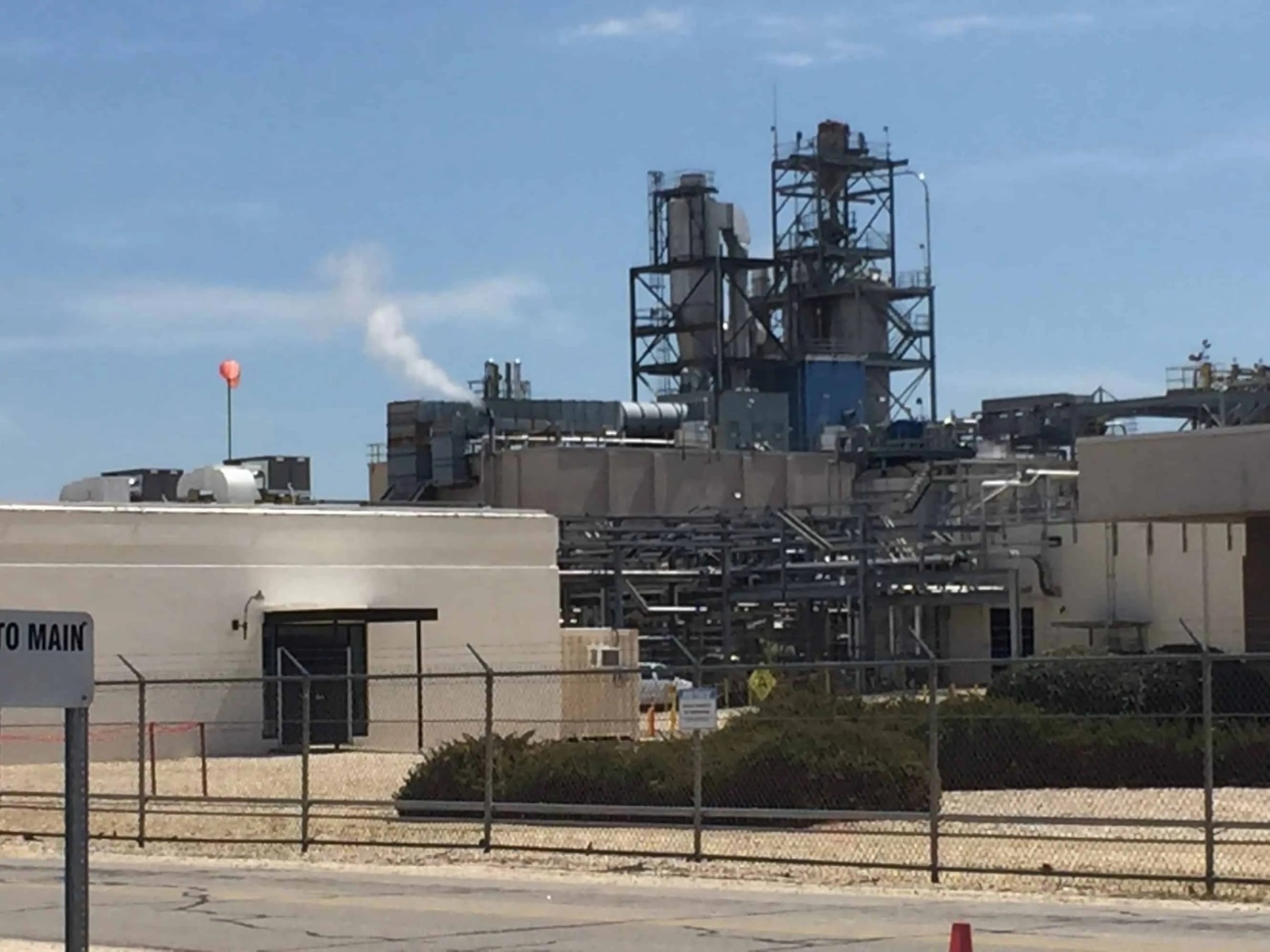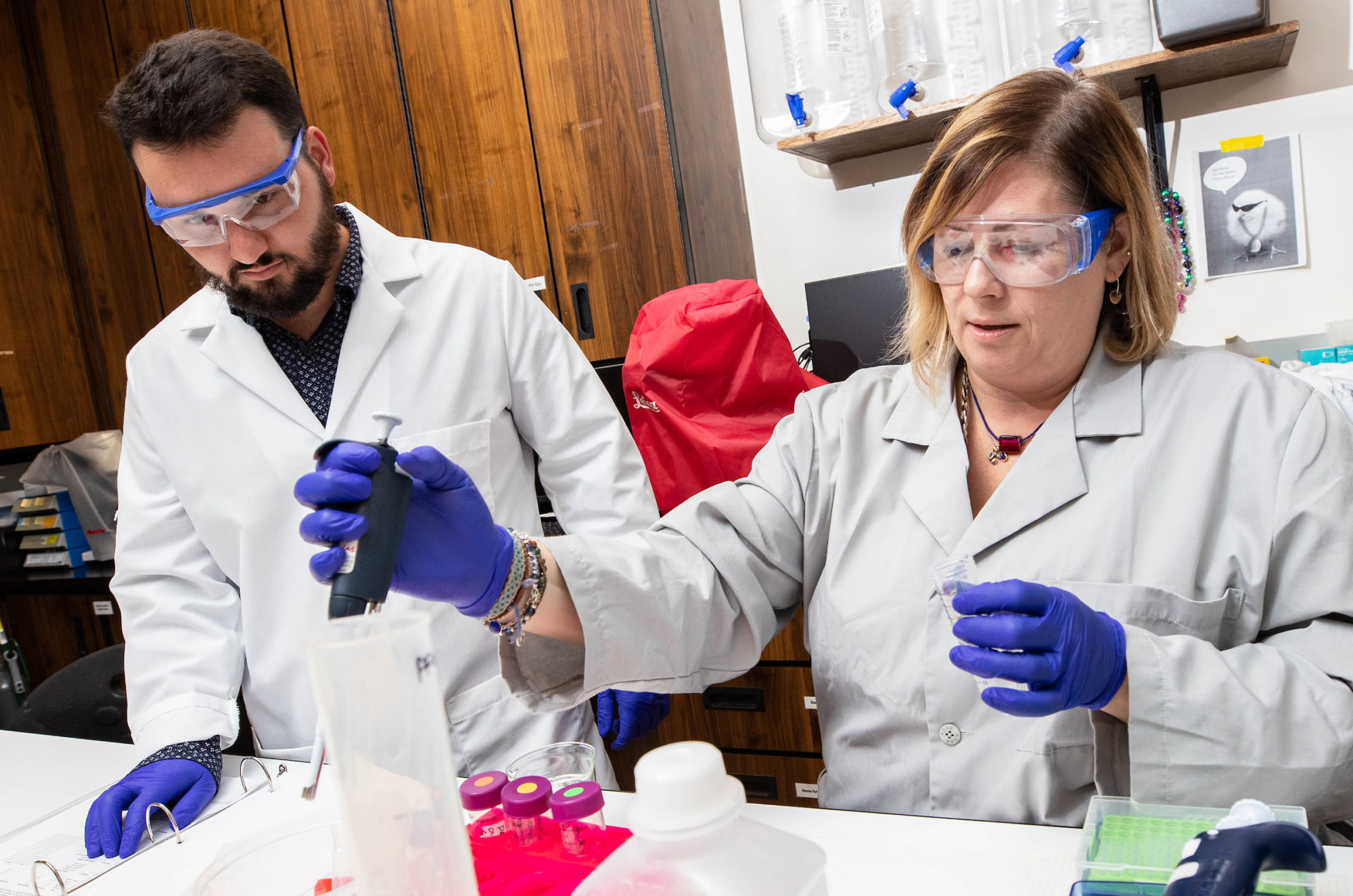
Reprinted from North Carolina Health News
John Wolfe doesn’t know what else he can do to protect himself against the coronavirus.
Supporter Spotlight
The Wilmington boat captain follows all of the Centers for Disease Control and Prevention guidelines. He wears a mask and requires tourists on his boat to do the same. He practices social distancing and washes his hands frequently.
But Wolfe, like thousands of others who live downstream of the Chemours chemical plant on the Cape Fear River, worries that he may be more susceptible to the coronavirus.
He has reason to be concerned.
Late last month, the CDC’s Agency for Toxic Substances and Disease Registry released a report saying studies suggest that exposure to high levels of per- and polyfluoroalkyl substances — commonly referred to as PFAS or “forever chemicals” — could suppress the immune system and increase the risk of getting COVID-19 and the severity of infection.
Studies have also shown that exposure to PFAS could reduce the effectiveness of childhood vaccines and adult flu vaccines.
Supporter Spotlight
The agency’s report was followed by an opinion piece from some of the nation’s leading PFAS researchers, including Jamie DeWitt of East Carolina University. The article was published July 6 in Environmental Health News.
“Most concerning during this global pandemic … is that exposure to PFAS suppresses the ability of the immune system to make antibodies — the part of the immune system critically important in fighting COVID-19 and other infectious agents,” the article states. “Our studies have found that laboratory animals exposed to PFAS have decreased antibodies, verifying what we have seen in PFAS-exposed people and making us confident that PFAS are toxic to the immune system.”
Blood tests show high PFAS levels
PFAS, a class of per- and polyfluoroalkyl substances, have been in use since the 1940s to make products nonstick, waterproof or stain-resistant. They’re used in rain jackets, carpets, upholstery, cookware, fast-food packaging, dental floss and much more.
DuPont — and Chemours since 2015 — produced PFAS either as a product or a byproduct at a chemical plant near the banks of the Cape Fear River in Bladen County. The Wilmington Star-News disclosed in June 2017 that high levels of GenX and other PFAS had been found in the drinking water for New Hanover, Pender and Brunswick counties.
Wolfe knows that his blood contains high levels of a few of the estimated 5,000 PFAS that exist. He has the results of blood tests conducted by North Carolina State University and released them to the public in November 2018 to prove it.

Researchers at N.C. State took tap water samples and drew blood from Wolfe and 344 other people living in the Lower Cape Fear River Basin. They found that the levels of certain types of PFAS were much higher in Wilmington than in the United States as a whole. Wolfe’s test results came back higher than the median for all of the study’s participants.
On Tuesday, Wolfe said he had just read the opinion piece linking PFAS to the coronavirus.
“My first thought when I read that article was like, ‘Of course, of course it does. Why wouldn’t it? It already does everything else that’s terrible for you. Let’s just throw this on the pile,’” he said.
According to the CDC, a large number of studies suggest that PFAS could cause an increased risk of testicular or kidney cancer, increased cholesterol levels, decreased vaccine response in children, changes in liver enzymes, increased risk of high blood pressure or preeclampsia in pregnant women and small decreases in infant birth weights.
Wolfe’s blood test found elevated levels of a particularly concerning type of PFAS called Nafion by-product 2, which has been used in the manufacturing process by both Chemours and DuPont. It has been found in tap water downstream of the chemical plant and in private wells surrounding it.
Wolfe said his blood tests revealed that he has a concentration of Nafion by-product 2 of 5.5 parts per trillion, double the median of everyone who participated in the testing.
A new study published in ScienceDirect found that the livers of mice given high doses of Nafion by-product 2 more than doubled in size compared with a control group.
Filtration systems coming
It’s estimated that 200,000 people get their drinking water from the Cape Fear River below the Chemours Fayetteville Works plant. The Cape Fear Public Utility Authority, which provides water to New Hanover County residents, is preparing to spend $46 million on a granular activated carbon filtration system that is expected to remove most of the PFAS in the finished water it delivers to customers. The system is scheduled to go online in early 2022.
Nearby, Brunswick County plans to spend $137 million on a reverse osmosis filtration system, completion of which appears to have been delayed until May 2023. Both utilities have filed lawsuits against Chemours and DuPont seeking reimbursement for the costs of installing the purification systems.
There are no federal or state standards for PFAS in drinking water. In 2016, the U.S. Environmental Protection Agency set a health advisory for two of the oldest PFAS — known as PFOA and PFOS — at 70 parts per trillion, either by themselves or in combination. North Carolina set a provisional health advisory of 140 parts per trillion in drinking water for GenX. None of those advisories is legally enforceable, and no other PFAS have health advisories.
Private wells also contain PFAS
People living below the Chemours plant who get their drinking water from the Cape Fear River aren’t the only ones in North Carolina dealing with exposure to PFAS in their drinking water.
More than 3,000 homes surrounding the plant have been found to have PFAS in their well water. That contamination, which extends at least 10 miles from the plant, was deposited through the air by DuPont and Chemours and seeped into the groundwater.
Last month, N.C. State released findings of testing on wells and tap water of 85 homes in the stricken area. Of those, 70 were found to contain GenX — 33 at levels above the state’s health guideline. Researchers found that wells containing high levels of GenX also contained high levels of other PFAS.
The researchers drew blood samples from residents, but those results aren’t yet available because the university’s labs had remained closed during the pandemic.
PFAS hotspots in the state
There are other hotspots of PFAS contamination in North Carolina. The NC PFAS Testing Network just released a complete data set of testing it conducted at 320 municipal water utilities in the state.
Of those, nearly half had levels of PFAS above the reporting detection level, according to a July 1 article by NC Policy Watch. The network is part of the NC Policy Collaboratory, a consortium of seven universities funded through grants and the General Assembly.
The network found Pittsboro’s water supply to have the highest concentration of all types of PFAS measured — a whopping 844.8 parts per trillion. The contamination is believed to be coming largely from industries that discharge into the Haw River upstream of Pittsboro and from an airport in Greensboro.
Researchers at Duke University are conducting studies of blood from Pittsboro residents, and the town has established a task force to help determine the best way to remedy the situation.
Network findings
Data from the PFAS Testing Network show that 10 municipal water plants in the state had total PFAS concentrations above 100 parts per trillion.
- Pender County: 425.5
- Bladen Bluffs: 423.5
- Wilmington: 406
- Harnett County: 217.5
- Bladen West: 144.5
- Fayetteville: 115
- Cary: 110.6
- Bladen East: 107.4
- Aurora: 104.3
- Harris Nuclear Plant: 102
For a complete set of the data, click here: https://ncpfastnetwork.com/data-and-tools/
The state Department of Environmental Quality says residents should avoid drinking water that has any individual PFAS measuring above 10 parts per trillion.
Of the 405 samples taken by the collaboratory at the municipal treatment plants, 42 had a single PFAS measuring above 10 parts per trillion, according to NC Policy Watch. None of the samples found GenX, PFOA or PFOS at levels above the federal and state health guidelines.
Regulating PFAS as a class
The EPA says it continues to address the problems caused by PFAS contamination across the country, including efforts to set maximum contaminant levels for the substances.
But DeWitt, the ECU researcher who has been studying PFAS for 15 years, and other scientists say PFAS need to be federally regulated as a single class. They make that argument in a study published on June 30 in Environmental Science & Technology Letters.
“To date, managing the risk of PFAS has focused primarily on one chemical at a time, or a small group of PFAS,” the study says. “This approach has not been effective at controlling widespread exposure to this large group of chemicals with known and potential hazards.
“The more we study PFAS, the more we learn about the harm they can do to our health and the environment. However, it is not possible to thoroughly assess every individual PFAS, or combination of PFAS, for their full range of effects in a reasonable time frame. Without effective risk management action around the entire class of PFAS, these chemicals will continue to accumulate and cause harm to human health and ecosystems for generations to come.”
New PFAS research center
Some, including Gov. Roy Cooper, argue that the EPA isn’t moving fast enough to limit the danger posed by PFAS.
Wolfe, the Wilmington boat captain, feels the same way. He is angry at DuPont and Chemours and thinks they should be required to clean up the contamination they caused.
“I’m concerned for my health. I’m concerned for my family’s health. Why should this be my problem, you know? What failed in the system to allow this to happen the way that it did?” he said.

Wolfe is also frustrated about the coronavirus and the idea that PFAS could make him more susceptible to the disease.
DeWitt and other scientists can’t definitively answer the question of whether people with high exposure to PFAS are more susceptible to COVID-19. No studies on people have been done to confirm what the researchers believe is true.
But DeWitt hinted that that could soon change.
In March, N.C. State announced that it has received a $7.4 million federal grant to establish the Center for Environmental and Human Health Effects of Per- and Polyfluoroalkyl Substances (PFAS).
The center will bring together researchers from N.C. State and East Carolina University to study PFAS toxicity and bioaccumulation. It is expected to become operational in the fall. When it does, DeWitt said she’ll be ready to go to work.
“One of the questions that I will be asking, is just that — why do PFAS suppress the ability of the immune system to make antibodies?” she said.
Mike Watters, administrator for the advocacy group Gray’s Creek Residents United Against PFAS in our Wells and Rivers, sent a letter dated June 23 to N.C. State professor Jane Hoppin supporting research into the possible link between PFAS exposure and the coronavirus.
Watters’ group has more than 2,400 members, most living just north of the Chemours plant. Hoppin has been the lead researcher in N.C. State’s GenX Exposure Study. Watters said he wrote his letter to support Hoppin’s quest for additional grant funding.
North Carolina Health News is an independent, nonpartisan, not-for-profit, statewide news organization dedicated to covering all things health care in North Carolina.







